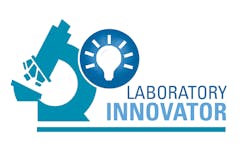Why did you choose a career pathology, transfusion medicine, and lab mangement?
What new developments do you expect to see in transfusion medicine in the next three to five years?
I see transfusion medicine continuing to expand in the areas of cellular therapies, molecular matching, and advancements in pathogen inactivation. I also hope to see continual efforts in donor recruitment to help sustain a reliable and diverse blood supply for our patients. We found that this was particularly important during the COVID-19 pandemic, as we were challenged to find best-matched donor blood for our sickle cell patients needing monthly red cell exchanges.
What factors led to your decision to move from Vice Chief of Pathology and Laboratory Medicine at Children’s Hospital of Philadelphia to Chief Medical Officer at Labcorp Diagnostics?
As CMO at a large commercial laboratory, I am still able to practice my specialty of clinical pathology, but I can also explore new ways to help patients and physician colleagues across the United States and around the world. We saw with the COVID-19 pandemic the importance of laboratories working together to provide testing to our patients, and I am now excited to be part of a larger vision that brought those teams together in the interest of patient care. I hope that collaborative partnerships continue in the future.
You have decided to continue teaching at the University of Pennsylvania Perelman School of Medicine. Why did you make this decision?
I firmly believe in mentoring and training the next generation of pathologists, and I am very invested in continuing to be involved in that mission. I co-direct the leadership course for our pathology residents and fellows at the Perelman School of Medicine. I now bring a new and different perspective to my lectures, with my experience in the corporate world. My goal is to formalize a rotation for pathology residents at Labcorp, to introduce our trainees to the inner workings of a large, commercial laboratory. I also plan to continue to be an official mentor to our junior faculty, both at Penn and Labcorp, to ensure success early in their careers.
What steps should labs take to manage quality and patient safety while juggling both SARS-CoV-2 testing and other work of the lab, such as testing for chronic diseases or before surgical procedures?
I am glad you asked this question. Most recently, I served in a pediatric hospital, and during the pandemic, we needed to be able to take care of our patients – the majority of whom did not have COVID-19 – during a time of crisis and uncertainty. Everyone worked really hard to make certain that patients were safe and received the necessary laboratory tests and procedures. The same applies to changes we had to make with our blood donor drives to safely manage the collection of blood. I am proud of my colleagues, both in reference and hospital-based laboratories, who quickly pivoted to develop testing strategies that were needed for SARS-CoV-2, and at the same time, focused on the core laboratory tests needed to manage patients with other health concerns.
Thinking about both providers and patients, what initiatives or approaches do you recommend labs implement to improve customer service?
The patient experience begins at the point of blood draw to ensure that the right patient is getting the right amount of specimen collected and placed in the right tubes, so there aren’t any issues with insufficient quantity that might require a patient recall or delayed test results. That is a seemingly small but vitally important step. One of my big focuses is on patient safety and patient identification, ensuring that the blood collected from the patient is correctly labeled. Another critical part of the patient experience is having physicians and scientists in pathology available for consultation and to guide test use and interpretation. Consumer-initiated testing continues to increase in popularity, and it is extremely important to provide sufficient educational material, so patients understand their testing results and when to seek further care.
We have many opportunities now, with more sophisticated analytics, to bring test results and interpretation to a new level to help provide better patient care. I’m excited to be on that journey with my colleagues and to see how it will provide added value for both our physicians and patients.


